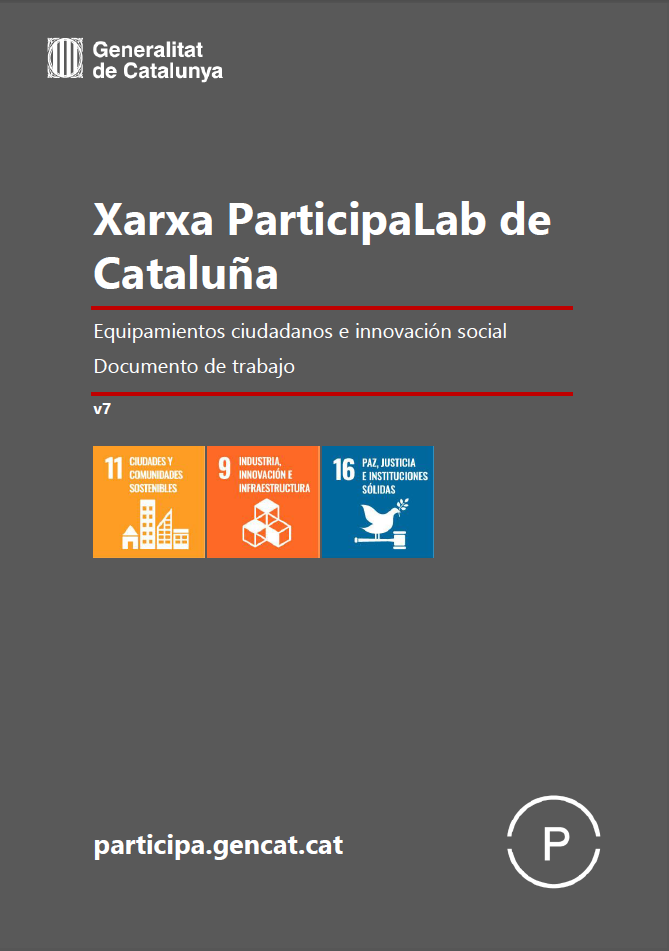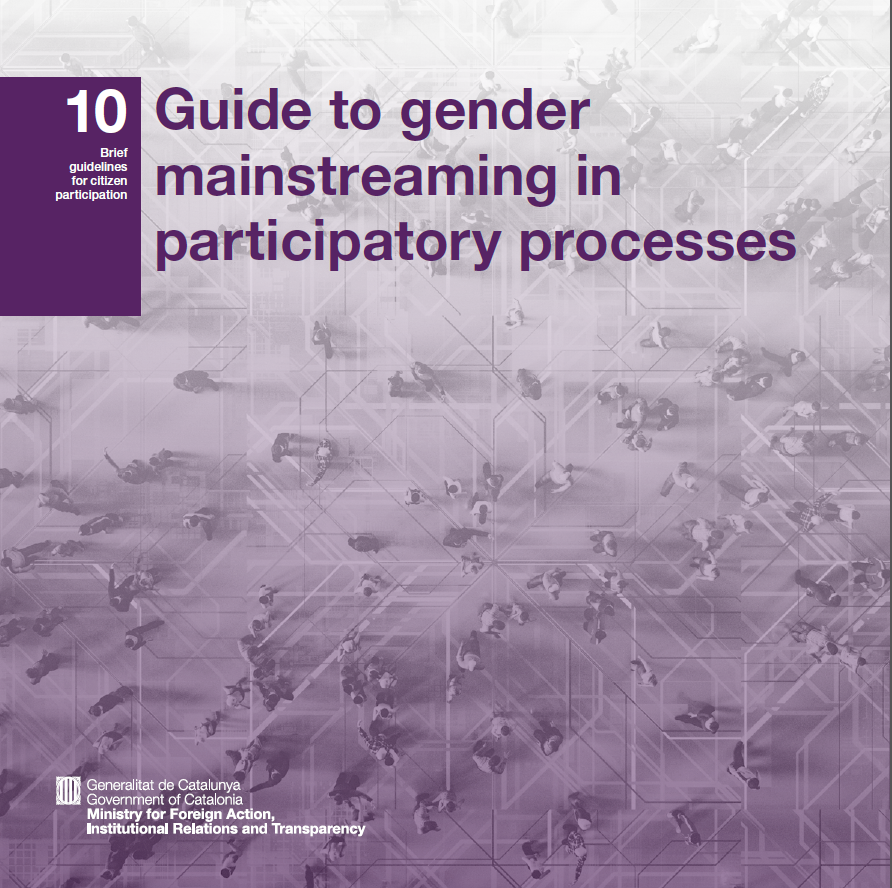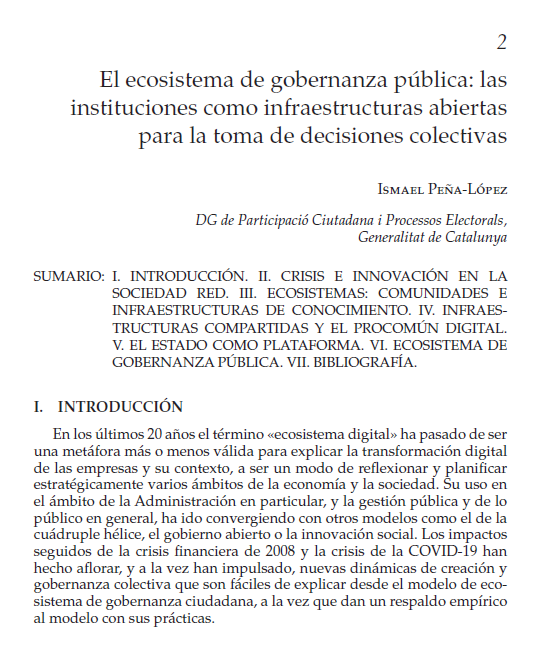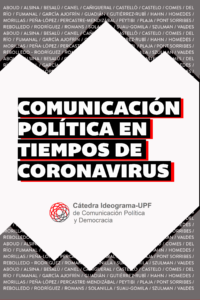In 2013, La Promesa del Gobierno Abierto (The Open Government Promise) was published, coordinated by Andrés Hofmann, Álvaro Ramírez Alujas, and José Antonio Bojórquez. The title referred to the resurgence (with strength) of the concept of open government, this time promoted by the of Barack Obama —then President of the United States of America— through his famous Memorandum on Transparency and Open Government of 21 January 2009 and the subsequent Open Government Directive of 8 December of the same year. The concept gained considerable traction at a time when the 2008 financial crisis had just erupted, and one of its causes had been identified as the obsolescence of the still prevailing Public Administration model, which was strictly hierarchical, closed, and inflexible. Open Government proposed a radical shift based on three main pillars: transparency, citizen participation, and collaboration between administrations.
Ten years later (twelve by the time the book has been published), a sort of assessment of the promises made by open government emerged has just seen the light, ¿Se cumplió la promesa del Gobierno Abierto?: Balance de una década, aprendizajes y desafíos de futuro en Iberoamérica (Was the Open Government Promise Fulfilled?: A Decade’s Balance, Learnings, and Future Challenges in Ibero-America), this time edited by César Cruz-Rubio and Álvaro Ramírez Alujas.
Solving Wicked Problems Through Open Government Approaches
In the winter of 2020–2021, while I was serving as Director General of Citizen Participation and Electoral Processes at the Catalan Government, our directorate general, and particularly the Sub-directorate General for Electoral Processes, was tasked with coordinating the operational organisation of the 2021 elections to the Parliament of Catalonia, held on February 1th, at the peak of the third and most contagious wave of the COVID-19 pandemic. The existing protocol, efficient and effective and improved over decades, proved insufficient in the face of a new, highly complex and deeply uncertain environment.
The way to tackle the challenge was by applying the Open Government paradigm to everything that was not strictly the hard core of the electoral procedure, in order to protect it from the environment, and by using the tools of the paradigm to guarantee the right to vote, minimise risks to public and individual health, and above all, preserve the legitimacy of the entire process. Thus, transparency, participation, and collaboration also became fundamental pillars of the electoral process, which is usually governed strictly by the Spanish Organic Law on the General Electoral System, not known for its flexibility or leniency.
This story is told in the chapter Resolución de problemas retorcidos mediante aproximaciones de Gobierno Abierto. El caso de las Elecciones al Parlament de Catalunya durante la pandemia de COVID19 (Solving Wicked Problems Through Open Government Approaches: The Case of the Elections to the Parliament of Catalonia During the COVID-19 Pandemic) included in the new volume, and in response to the question, it delivers a resounding yes: in our case, the promise of open government was indeed fulfilled. In fact, while we cannot be absolutely certain, we have no doubt that the success of the electoral process organisation was due to this methodological choice.
Both the book and the chapter can be freely downloaded.
Abstract:
Wicked problems are among the greatest challenges in public policy because, by definition, there is no generic heuristic to address them.
During the early months of the COVID-19 pandemic, and until vaccination campaigns were widely implemented, holding elections worldwide posed a challenge in terms of public health, fundamental rights, and the legality and legitimacy of the processes.
We study the case of the elections to the Parliament of Catalonia, held at the peak of the third and most contagious wave of the pandemic in Spain, at a time when the vaccination campaign was still in its infancy.
We analyse how the systematic application of an Open Government paradigm enabled a successful approach to the wicked problem. We also show how it was applied structurally and systematically, embedded in the daily tasks of the Administration, marking a radical cultural change in one of the most protocolised and inflexible areas as the electoral system.
Downloads:
PS: This chapter is dedicated, in gratitude, to the team of the Sub-directorate General for Electoral Processes and the Electoral Office, as well as to the tens of thousands of people involved in the preparation of the elections, especially Núria Arbussà, Óscar Cristóbal, Aman Blasco, Jordi Miró, Rosa M. Vilar, Glòria Moreno, Mari Carmen Ruiz, Míriam Carrera, Maria Javierre, Carla Santos, Lluís Anaya, Oscar Soriano, Xavier Llebaria, David Mestres, Carmen Cabezas, Sergio Delgado, Josep Maria Reniu, and Simón Pérez. Not all of them may be listed here, but all those who are listed were there and represent the many, many more. To all of them, thank you for being such excellent colleagues.
I here present my communication for the 4th Congress of Economics and Business of Catalonia 2025 organized by the College of Economists of Catalonia. The communication is titled New Public Governance in practice: a toolbox model for public policy in times of networks, uncertainty and complexity and proposes and applied model to transform public Administrations in order to face this new era of complexity, uncertainty and networks.
The theoretical background is that of New Public Governance that has been building momentum for the last 20 years approximately. The intended contribution of my paper is not to build up on theory, but how to bring all this theory into practice, how to provide something public managers can cling on to foster the much needed transformation of public Administrations.
The original paper is in Catalan, but can also be downloaded in English and Spanish — automatically translated, with just some minor revisions, so some errors may remain.
The communication will formally be presented on April 8th, 2025, 18:00h, at the College of Economists of Catalonia.
Abstract
With the decline of the great ideologies of the 20th century and the ongoing revision of the socioeconomic model and social contract in the 21st century, the concept of an entrepreneurial administration has gained significant momentum. This administration is envisioned as one capable of dialogue and engagement with other actors in its ecosystem, asserting its voice in designing a constituent process centred on the general interest, as well as economic, social, and environmental sustainability in an increasingly dynamic, complex, and uncertain environment. Although conceptually framed as “New Public Governance,” this model still faces substantial challenges in practical implementation. These challenges arise both within internal organizational structures—such as procedural inefficiencies, scope of competencies, and relationships between units and different administrations—and in the delivery of public policies and services, including effectiveness, efficiency, and citizen engagement. This article examines the critical factors necessary to implement this model, drawing on a constellation of instruments designed to drive profound transformation. These instruments aim for systemic impact beyond immediate results, recognizing the inherent difficulties in establishing clear causal relationships, reaching unanimous diagnoses, and charting stable paths of action. Our analysis is structured around six key levers of change: governance, organization, talent, processes, quality in management, and democratic quality. The findings point toward an administration that focuses less on direct execution and more on enabling: acting as a platform that facilitates, articulates, energizes, and structures ecosystems of actors to achieve broadly shared objectives and impacts. Ultimately, this approach seeks to open the public system to greater collaboration with the civic, economic, political, and social ecosystems.
Downloads
Bibliography
Brest, P. (2000). “
The Power of Theories of Change”. In
Stanford Social Innovation Review, Spring 2000, 47-51. Palo Alto: Stanford Center on Philanthropy and Civil Society.
Brouwer, H., Woodhill, J., Hemmati, M., Verhoosel, K. & van Vugt, S. (2016).
The MSP Guide. How to design and facilitate multi-stakeholder partnerships. 3rd edition. Wageningen: Wageningen University and Research, WCDI, and Rugby, UK: Practical Action Publishing.
Col·legi d'Economistes de Catalunya (Ed.) (2018).
El sector públic a la Catalunya del futur. 3r Congrés d'Economia i Empresa de Catalunya. Cap a un model eficient i equitatiu. Barcelona: Col·legi d'Economistes de Catalunya.
Connell, J.P. & Kubisch, A.C. (1998). “
Applying a Theory of Change Approach to the Evaluation of Comprehensive Community Initiatives: Progress, Prospects, and Problems”. In Fullbright-Anderson, K., Kubisch, A.C. & Connell, J.P. (Eds.),
New approaches to evaluating community initiatives: Theory, measurement, and analysis. Volume 2. Queenstown: Aspen Institute.
Cortés Carreres, J.V. (2021). “
Carrera horizontal y evaluación del desempeño”. In Cantero Martínez, J. (Coord.),
Continuidad versus transformación: ¿qué función pública necesita España?, Capítulo 14, 401-446. Madrid: Instituto Nacional de Administración Pública.
Font i Llovet, T., Barrero Rodríguez, C., Díez Sastre, S., Galindo Caldés, R., Rivero Ortega, R., Solé Vilanova, J. & Vilalta Reixach, M. (2023).
Repensar el govern local: perspectives actuals. Col·lecció Institut d'Estudis de l'Autogovern, 16. Barcelona: Institut d'Estudis d'Autogovern.
Greenway, A. & Loosemore, T. (2015).
The Radical How. London: UK 2040 Options Nesta, Public Digital.
Keane, T., Caffin, B., Soto, M., Chauhan, A., Krishnaswamy, R., Van Dijk, G. & Wadhawan, M. (2014).
DIY Toolkit. Development Impact & You. Practical tools to trigger & support social innovation. London: Nesta.
Peña-López, I. (2023a). “
La gestión integral del talento en la Administración centrada en la política pública de impacto”. In Gairín Sallán, J. & López-Crespo, S. (Coords.),
Aprendizaje e inteligencia colectiva en las organizaciones después de la pandemia, Capítulo 3.2, 131-137. Comunicación en el Simposio "De la función pública al Servicio público: hacia un nuevo modelo de aprendizaje y desarrollo" del VII Congreso Internacional EDO 2023, 18/05/2023. Madrid: Praxis-La Ley.
Ramia, I., Powell, A., Stratton, K., Stokes, C., Meltzer, A. & Muir, K. (2021).
Roadmap to social impact: Your step-by-step guide to planning, measuring and communicating social impact. Sydney: The Centre for Social Impact.
When working with the idea of the citizen participation ecosystem from the point of view of a national government, one of the basic questions is how the Administration should nurture and facilitate such ecosystem. There are, at least, two approaches that have been traditionally explored.
- On the one hand, the Administration can fund the creation or growth of a body of professionals that can contribute to deploy a number of citizen participation initiatives all over a given territory. These professionals can work at the higher level of the Administration or can be distributed or scattered on lower levels of the Administration (i.e. local administrations), but the result is to be able to cover most necessities with a good amount of trained and dedicated professionals.
- On the other hand, and sometimes compatible with the former approach, the Administration can fund the creation or growth of a constellation of facilities that would run initiatives specifically devoted to the promotion of citizen participation. They can have many names depending on their particular focus or especialization: citizen labs, living labs, social innovation labs, fabrication labs (fab labs), maker spaces, etc.
The problem with these approaches is, at least, double:
- They are not very economically sustainable, as they require and maintaining groups of people and networks of facilities with a single purpose and which can very difficult be replicated or scaled outside of their specific area of intervention. Of course this is a goal worth aiming at, but for starters it makes the investment very demanding.
- They are not very socially sustainable, as they divert the attention and focus of the citizen, which now has new places to go, which can be good, but also bad: people have a limited capability to gather at and to focus their attention on.
Another approach is to leverage the fact that there are already public facilities on place and that people are already using them and gathering around them. Thus, instead of creating a new network of people and facilities in addition to the existing ones, another approach could be creating a new network of people and facilities upon the existing ones, or in other words, overlapping new goals and uses with the already existing ones.
The Catalan ParticipaLab Network aims at just that. We borrowed the name from the successful ParticipaLab initiative of the Medialab-Prado in Madrid (Spain) but with the idea not to create a new big facility, not even a network of small facilities, but to weave a network of citizen labs by providing a portfolio of new content and services to the already existing networks. The logic behind it is to follow Artur Serra’s ideas on citizen labs, who proposes thinking of citizen labs as we do in public health systems: there is a large network of primary health care you go to when you feel sick, a second network of regional hospitals you are sent to if things get complicated, and national network of top-level hospitals you are sent to when the situation becomes really bad. Same would apply to citizen participation and social innovation.
With that logic in mind, big top-level citizen labs would be the top-level hospitals of democratic innovation; regional networks of living labs or fab labs or maker spaces would be the regional hospitals, and… and already existing public facilities should be able to act as primary democratic innovation points of access for the general population at the local level.
A first approach to this scheme I drafted it at The role of public facilities and civic centres in a citizen participation ecosystem.
After this first scheme, my colleague Yago Bermejo and I (much more him than I, truth be told) developed the main principles, guiding lines and preliminary portfolio for such a network of public facilities devoted to citizen innovation for quality democracy.
The result is the report Xarxa ParticipaLab de Cataluña. Equipamientos ciudadanos e innovación social [Catalan Participation Lab Network. Public facilities and social innovation], which is expected to be the blueprint and roadmap to deploy such a network from the Catalan Government. The report is in Spanish and Catalan and can be downloaded below.
Downloads
Although I had been long interested on gender studies, during December 2018 and the first months of 2019 I began to actively search for documents that dealt with the issue of gender (discrimination, inequality, etc.) on citizen participation. I found out that there was quite a lot of literature on gender and democratic institutions, but nothing specifically on gender mainstreaming in participatory processes.
So, at the Directorate General of Citizen Participation and Electoral Processes we decided to do our own research and project on the issue. With the valuable help of Fundació Surt, and after an initial training, we analyzed public procurement, the facilitation of events, the evaluation processes, information and communication protocols, etc. under the light of gender mainstreaming.
The result was triple. First, the aforementioned analysis and evaluation; second, a set of internal protocols to improve our own work; third, a Guide to gender mainstreaming in participatory processes so that anyone in the field of citizen participation can use and apply in their own citizen participation instruments.
The guide has been published in Catalan and English (see below) and the whole project was distinguished by the IOPD with a special mention in their distinction on the “Best Practice in Citizen Participation”, the award given annually by the International Observatory on Participatory Democracy to recognize public policies implemented by local governments.
Below one can download the guide and access the bibliography I personally used on gender planning and evaluation methodologies in relationship with citizen participation.
Downloads
Bibliography
Berbel Sánchez, S. & Geronès i Rovira, M. (2008). “
Participació política de les dones”. In Bodelón, E. & Giménez, P. (Coords.),
Desenvolupant els drets de les dones: Àmbits d'intervenció de les polítiques de gènere, Capítol 12, 199-231. Col·lecció Estudis, Sèrie Igualtat i Ciutadania, 2. Barcelona: Diputació de Barcelona.
Delatte, M., Guijarro, B., Almirall, J., Llop, N., Adell, H. & Medrano, A. (2018).
Anàlisi de la participació de dones en els espais institucionals i socials mixtos de la ciutat de Barcelona. Barcelona: Ajuntament de Barcelona, Liquen Data Lab.
Ecologistas en Acción (2018).
Patriarcalitest. Madrid: Ecologistas en Acción.
United Nations Human Settlements Programme (2012).
Gender Toolkit. New York: OCHA.
Xarxa d'Economia Solidària de Catalunya (2017b).
Reunions roDONES. Barcelona: XES.
At the beginning of the COVID-19 crisis I wrote about the differential impact of crisis in the Information Society based on the first fact that were quickly becoming evident before our eyes and at plain sight.
Shortly after, professors Josep M. Reniu and Víctor Meseguer led a monography on how the COVID-19 crisis was impacting democratic institutions and what to do about it. The book ¿Política confinada? Nuevas tecnologías y toma de decisiones en un contexto de pandemia [Confined politics? New technologies and decision-making in a pandemic context] focuses on how institutions are responding to a pandemic that keeps people at home or away from each other, and how they are figuring out ways of keeping in touch with citizens and keep performing the tasks they have been committed to.
I wrote a book chapter, the second one, with the aim to provide a wide landscape on how democratic institutions and the democratic arena are configuring themselves, and how the pandemic crisis may be an accelerator to it. On El ecosistema de gobernanza pública: las instituciones como infraestructuras abiertas para la toma de decisiones colectivas [The ecosystem of public governance: institutions as open infrastructures for collective decision-making] I take the idea of the citizen participation ecosystem to a higher level, trying to scale it up to the global public governance level.
To do so, I introduce the concept of ecosystems on social sciences, which have been applied with much success —in my opinion— to describe the quick deployment of digital business infrastructures. I describe such ecosystems as knowledge communities and infrastructures that wrok in open and shared ways, aiming at the building of a digital commons. Following, I review the idea of ‘the state as a platform’, ending up with a definition and proposal of the ecosystem of public governance, which I define as:
A public governance ecosystem is a technopolitical, self-organized, autopoietic, replicable and scalable system that articulates actors, spaces and instruments around a set of open and distributed infrastructures rich on knowledge for collective decision-making.
A preprint of the whole chapter (in Spanish) and the bibliography I used can be accessed below.
Downloads
Bibliography
Chesbrough, H.W. (2003). “
The Era of Open Innovation”. In
MIT Sloan Management Review, Spring 2003, 35-41. Cambridge: MIT Sloan School of Management.
Dini, P., Darking, M., Rathbone, N., Vidal, M., Hernández, P., Ferronato, P., Briscoe, G. & Hendryx, S. (2005).
The Digital Ecosystems Research Vision: 2010 and Beyond. Brussels: European Commission.
Heimstädt, M., Saunderson, F. & Heath, T. (2014). “
Conceptualizing Open Data Ecosystems: A Timeline Analysis of Open Data Development in the UK”. In Parycek, P. & Edelmann, N. (Eds.),
CeDEM14. Proceedings of the International Conference for E-Democracy and Open Government 2014, 245-255. 21-23 May 2014, Danube University Krems, Austria. Krems: Edition Donau-Universität Krems.
Iansiti, M. & Levien, R. (2004). “
Strategy as Ecology”. In
Harvard Business Review, March 1, 2004. Cambridge: Harvard University.
Nachira, F., Nicolai, A., Dini, P., Le Louarn, M. & Rivera León, L. (Eds.) (2007).
Digital Business Ecosystems. Brussels: European Commission.
O’Reilly, T. (2011). “
Government as a Platform”. In
Innovations: Technology, Governance, Globalization, 6 (1), 13-40. Cambridge: MIT Press.








